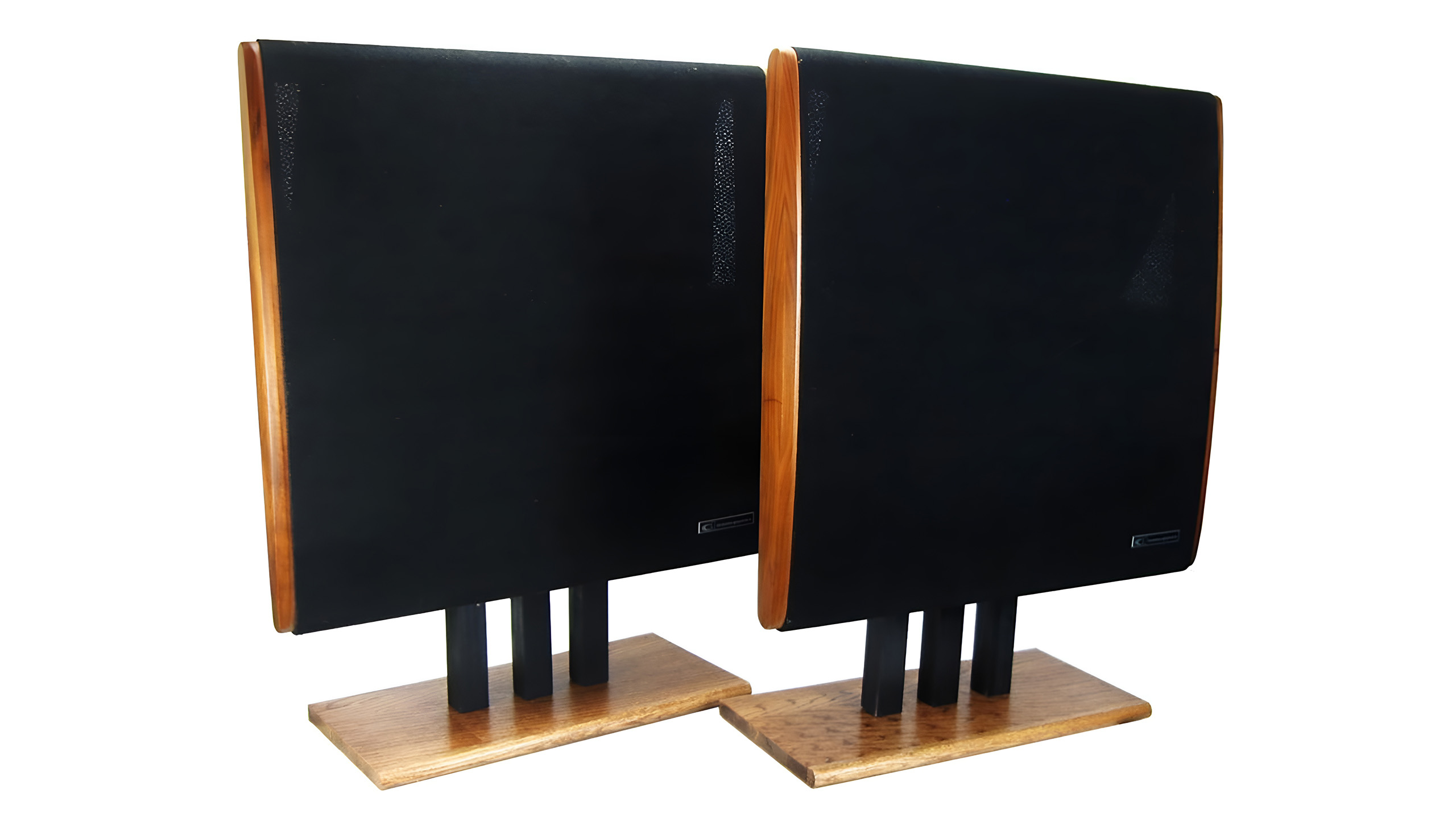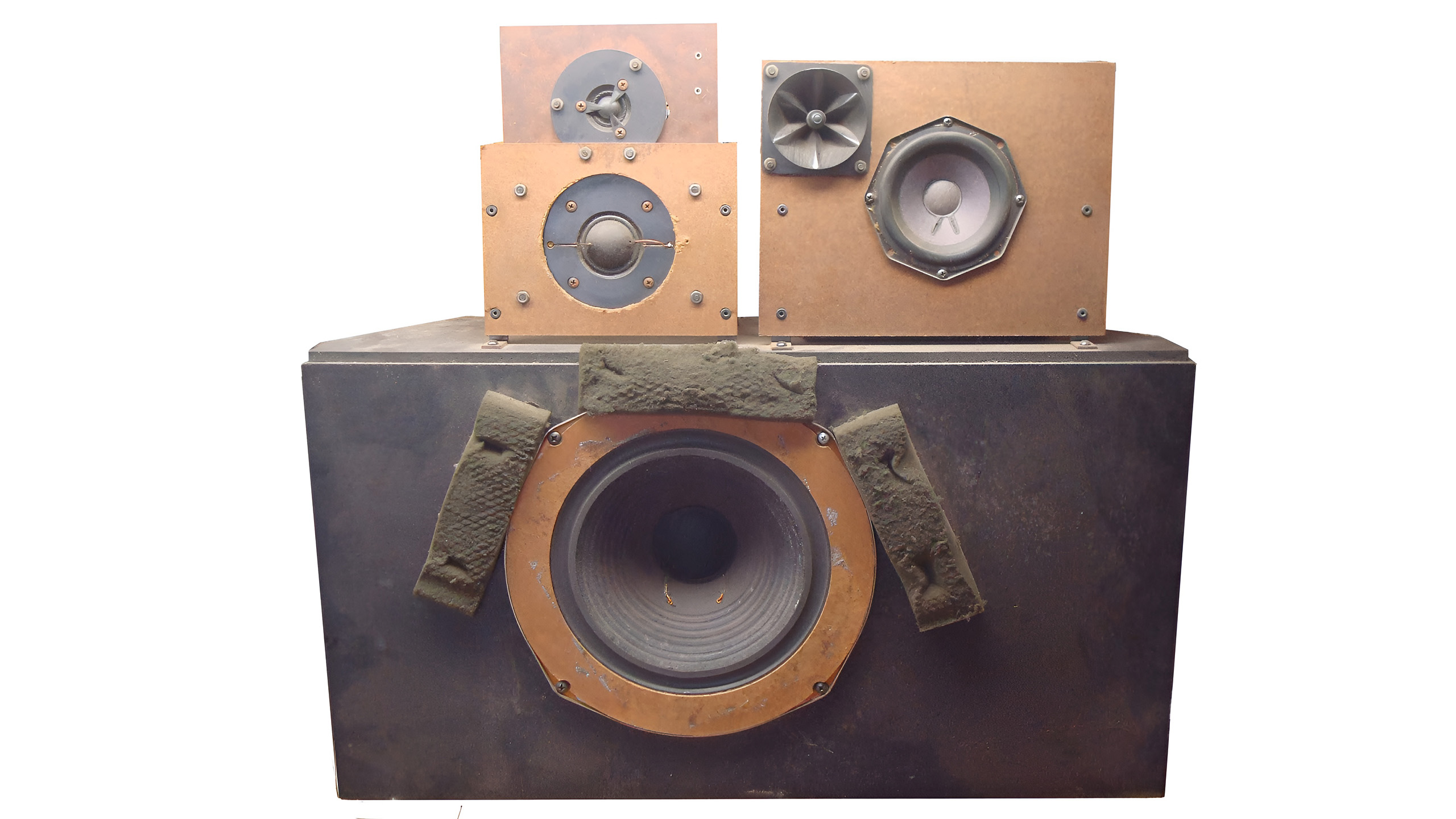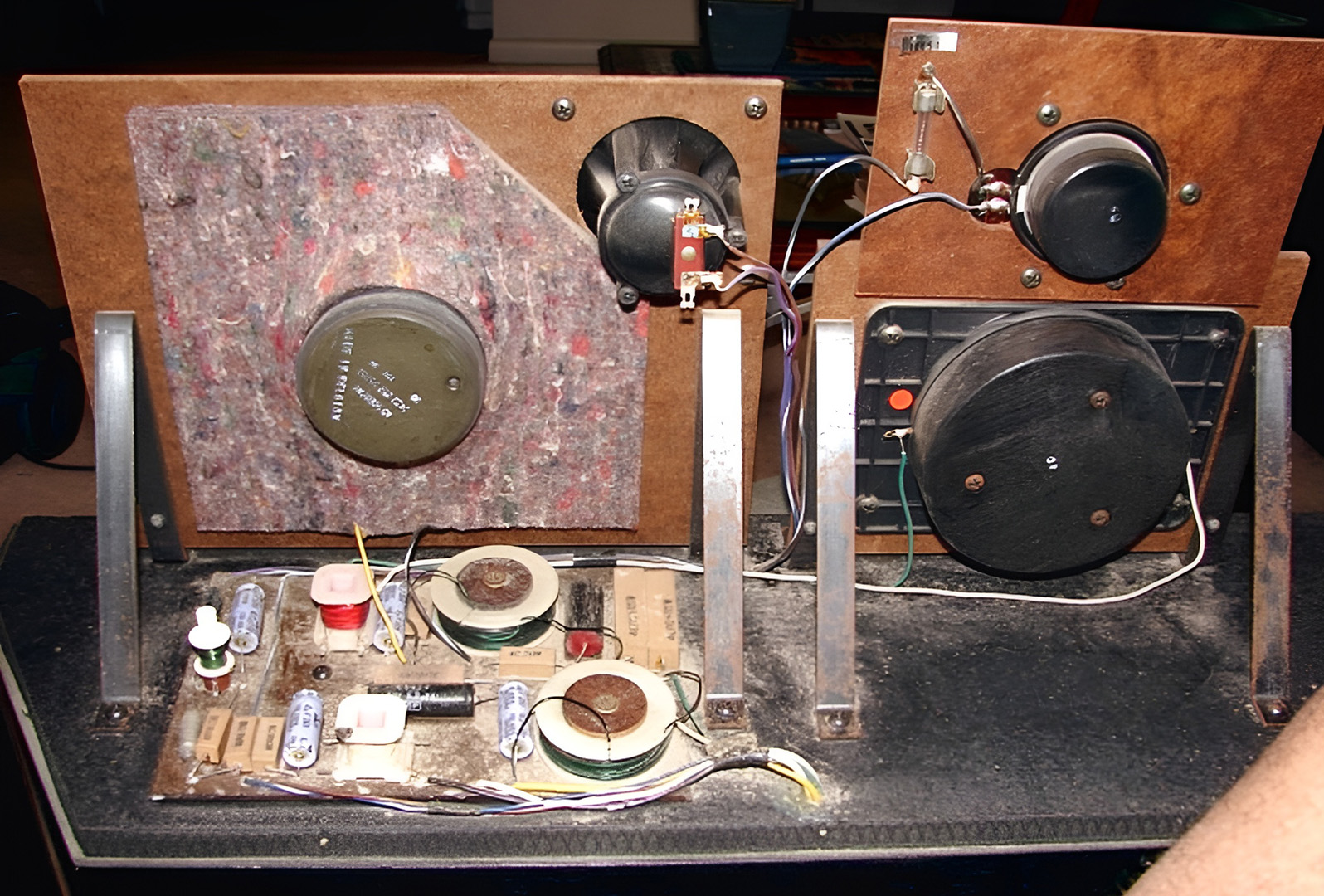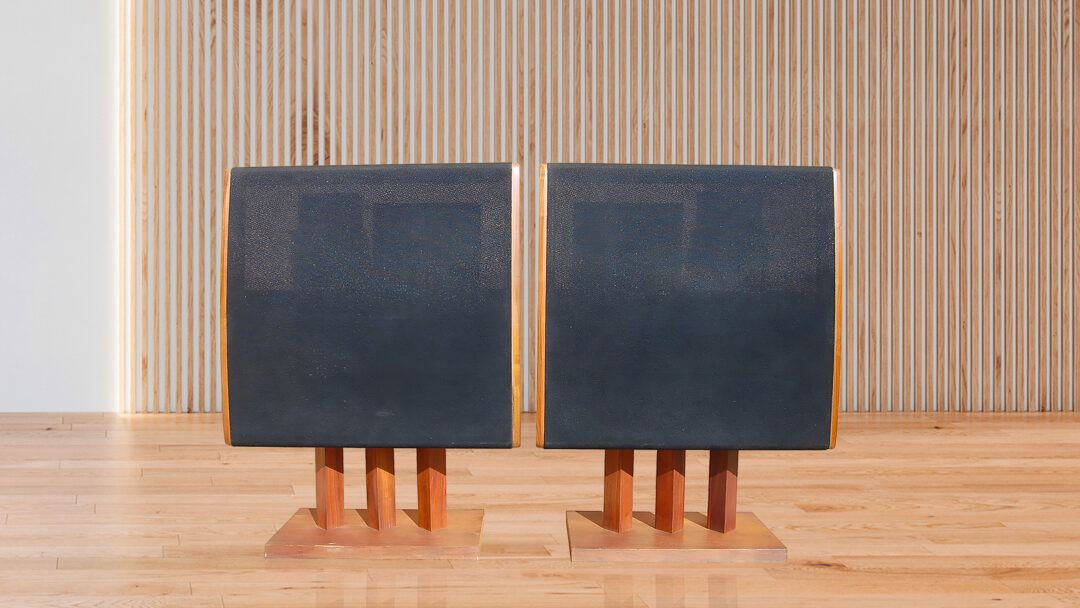One of the most famous and groundbreaking speakers from the 1970s is the Dahlquist DQ-10. And it caused quite a stir when it was first unveiled at a hi-fi show in New York in 1972. Not only did it look radically different from the box-shaped speakers of the time. It was also sonically ahead of almost everything else. And it was from a brand new and unknown company.
The company may have been new and unknown, but the people behind it were experienced. Jon Dahlquist was joined by none other than Saul Marantz, who, after leaving Marantz in 1968, was now ready for new electronic adventures. The Dahlquist team also included Irwing M. Fried, who later founded the loudspeaker company IMF.
The Dahlquist DQ-10 looks elegant at first glance. The slim curved fabric front and curved wooden sides are reminiscent of the Quad ESL 57. Which is hardly a coincidence. According to some sources, Jon Dahquist was inspired by the classic English electrostatic speakers.

Scraps from the rummage box?
If you look behind the front fabric or step behind the loudspeaker, where you have a clear view of the interior through a metal grille, the aesthetics fall to the ground. Or rather: The loudspeakers look like something a DIY enthusiast has randomly knocked together in his garage from scrap wood and bits and pieces from the recycling bin!
Five different speaker units from four different manufacturers are seemingly randomly placed among each other. Most of them each have their own baffle. The woofer is 12 inches, but the diaphragm fits a 10-inch woofer and a masonite ring is cut to fit the diaphragm and suspension in the larger basket. The super tweeter is an infamous piezo horn of the type usually only found in teenage teen room racket speakers (and even then it doesn’t sound good)! Pieces of foam rubber attached with staples complete the chaotic impression.

Phase linear before its time
But sonically, the Dahquist DQ-10 is the exact opposite of chaotic. It’s exceptionally coherent and precise. And the five drivers acoustically merge into one. The purpose of placing the drivers on different small plates instead of one large baffle is to minimise the risk of diffraction. And the units are staggered to equalise the time difference between them, so the sound from them reaches the ear at the same time.
The multiple devices are meticulously placed to maintain the same distance to the ear. But that also means you need to be just as meticulous when setting up your speakers. A slight inaccuracy in the angle is enough to break the magic.
Diffraction cancellation and phase linearity is something every serious speaker manufacturer today takes into account in their design. But in 1972, it was brand new and unheard of! Dahlquist called the technique ‘phased array’. The Dahlquist DQ-10 is known for an extremely precise impulse reproduction that almost matches the aforementioned electrostats. But with a much bigger bang in the bass.
60,000 sets in 16 years
Around 60,000 sets of DQ-10s were sold between the launch in 1972 and 1988, when production was terminated. A very long product lifespan. The model remained largely unchanged, although the woofer was later changed to a different model when the remaining stock of Advent units from which the original model with the masonite edge was sourced ran out. Also, the midrange/treble section on the later models is mirrored. Dahlquist was also very open about the build and was happy to offer advice to DQ-10 owners who wanted to bring their speakers up to date with new components.

The Dahlquist DQ-10 is a more than 50-year-old design, but still a coveted classic that can give newer speakers a run for their money in terms of sound quality. If you dream of owning a set yourself, you should expect it to cost €1,500 – €2,000 for a set in working condition. And that they may need to be picked up in another European country. Which is still considerably more affordable than if you had become infatuated with, for example, the JBL Paragon.


I’m an original owner of DQ 10’s. I think the maid turned the volume knobs on my 2205 all the way up and the fuse didn’t protect me. I believe that the bass speaker, maybe both, need re-coning. Their sound has been fabulous powered by a dual amp Mcintosh setup. Would there be an equivalent quality currently manufactured? I’m going to keep these but was thinking of changing out the other amp’s JBL studio monitors, bought at the same time.
My favorite speakers ,to this day.
The DQ-10s were part of the best audio system I could ever dream of having — powered by a Hafler DH500 amp, supplemented by an Audio Pro B2-50 subwoofer, and controlled by a Carver Sonic Hologram pre-amp, they were amazing. When showing off what they could do, I’d position someone in the sweet spot, have them listen with their eyes closed, and ask them to point to where they heard a particular sound coming from — the trumpets, for example, in a symphonic piece. Then I’d tell them to open their eyes and see that they were pointing to a spot 3-5 feet away from the actual speakers. Incredible presence, clarity, and soundstage.
Phase Linear before its time? I think you will find the Quad ESL57 did this many years before. And that is before the ESL63 included the “Point Source”. However the Dahlquists would go louder than the Quads.
Playing my ESL57s next to my friend’s DQ10s, the Dahlquists had a very noticeable “honk” in the midrange. Meanwhile, the QUADs’ midrange was lucid and natural. Yes, the Dahlquists played louder, but not as naturally.